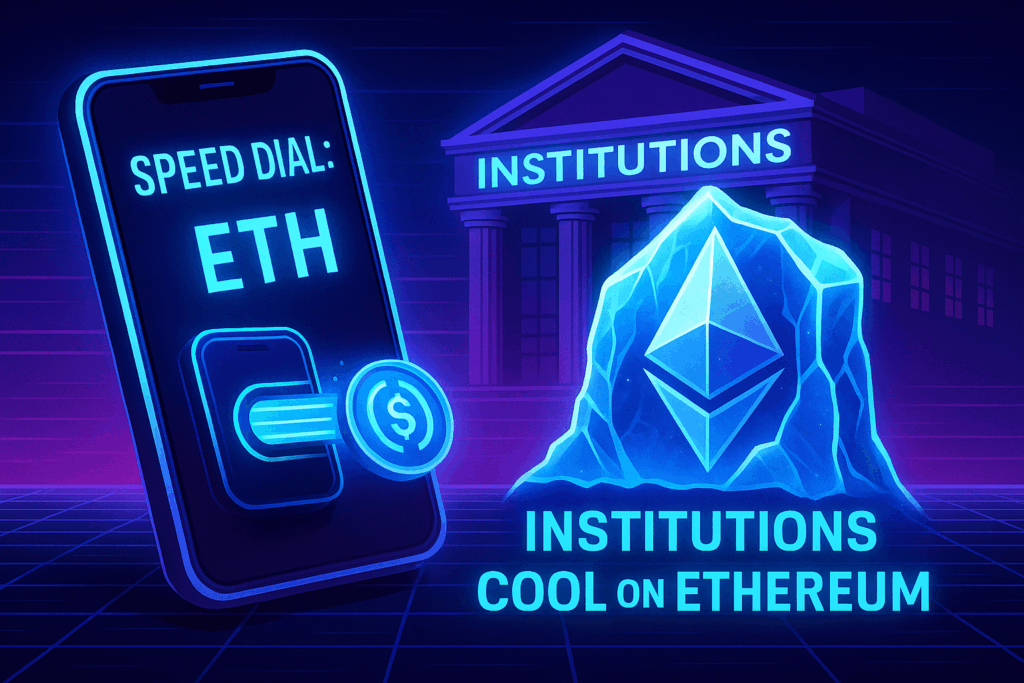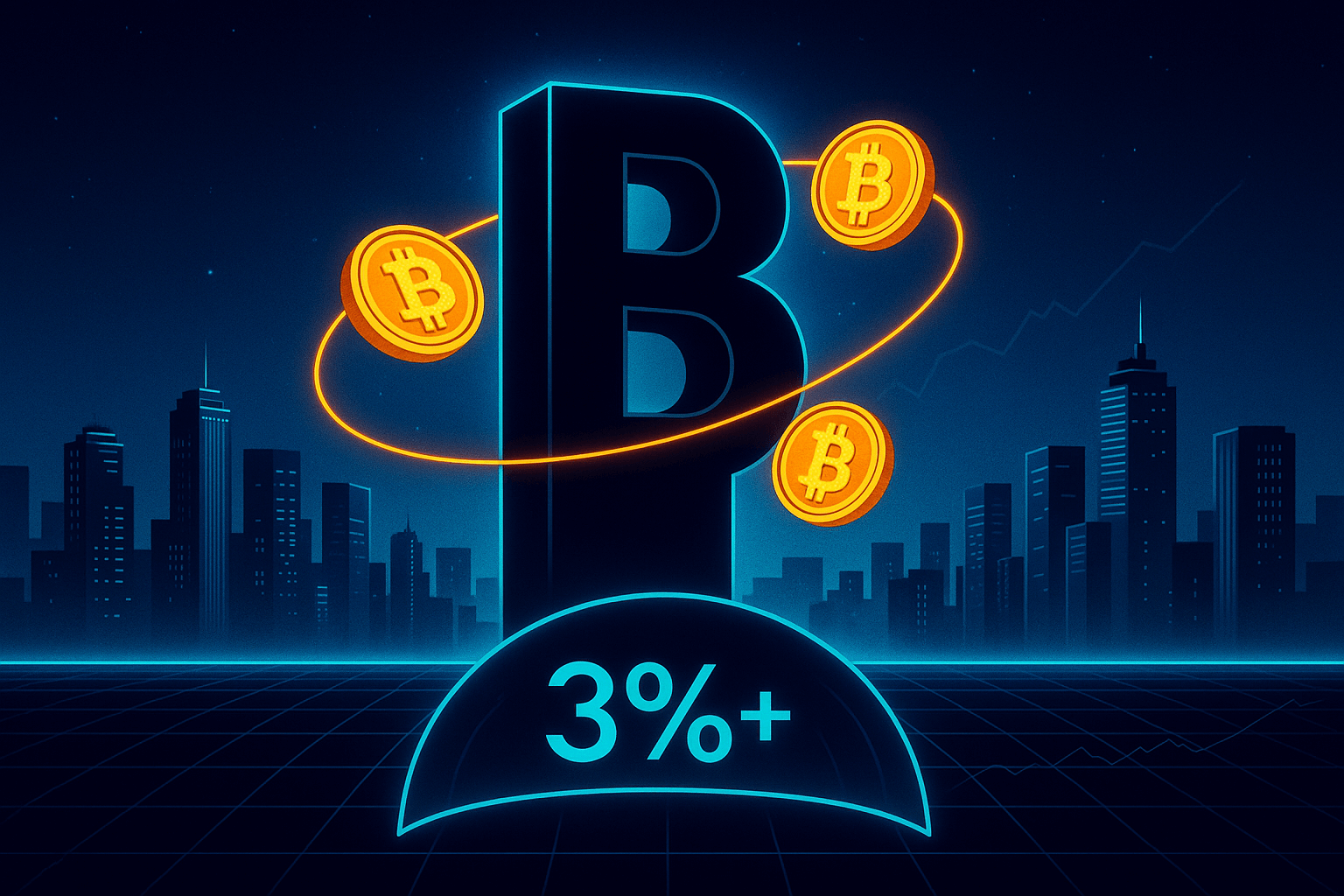
Institutions Cool on Ethereum but Keep Ether on Speed-Dial
April 9, 2025
Outflows Tell a Nuanced Story
On-chain forensics show several flagship crypto funds lightening their Ether positions during April. One investment bank moved more than sixty-five thousand ETH to a major exchange, while a prominent venture house routed a tranche of ETH to a qualified custodian. Yet neither player hit the panic button; both still hold meaningfully larger balances than they did at the start of the year. The message: allocations are being resized, not zeroed.
The Triple Squeeze on Ethereum’s Base Layer
Fee Compression
Gas costs have slid to levels last seen in 2017, thanks to rollups siphoning traffic away from the mainnet. Cheaper transactions delight users but slash the ETH that would otherwise be burned under EIP-1559. Less burn equals weaker scarcity economics and a softer narrative for “ultra-sound money.”
Inflationary Drift
After twenty months of net deflation, Ethereum’s total supply flipped positive in early 2025. Rising validator rewards plus lower burn flipped the issuance math. Ether is now expanding at roughly 0.4 % annually — modest next to fiat, yet a psychological turnabout that matters to treasurers who bought the deflation pitch.
Architectural Uncertainty
Vitalik Buterin’s recent RISC-V virtual-machine proposal signals that the Ethereum Virtual Machine may have reached its performance ceiling. A full VM swap could supercharge throughput, but it also raises migration risk: a hard-fork scale upgrade that every contract, rollup and wallet must digest. Institutions hate tech risk they can’t model.
Why Ether Still Sits on the Watchlist
- Liquidity King: Ether remains the deepest altcoin market on every major exchange desk. For funds that need to move size, nothing else comes close.
- Derivatives Depth: CME futures, options and ample perpetual markets provide hedging rails unavailable for the vast majority of layer-one competitors.
- Ecosystem Gravity: Even as rollups cannibalize mainnet fees, they settle to Ethereum. That gives ETH a structural role as settlement collateral.
The Rise of Challenger Chains
Solana captured the 2024 memecoin boom with blistering throughput and sub-cent fees. Avalanche’s HyperSDK and Cosmos-based appchains nibble on bespoke use-cases. Each offers upside in raw speed but faces its own bottlenecks in tooling, liquidity and regulatory optics. For institutions, moving capital from Ethereum is less a breakup, more a polyamorous rebalancing.
Macro and Policy Backdrop
U.S. lawmakers are inching toward a unified digital-asset bill that could finally bless staking as a legal yield, eliminating a key compliance headache for funds holding ETH. Meanwhile, the Fed’s dovish drift supports risk assets, but stickier inflation keeps real yields positive — a mixed cocktail for long-duration crypto bets. Against that backdrop, rotating into faster chains or trimming ETH simply reflects a broader hunt for asymmetric risk-reward.
Strategic Playbook
Accumulation Range: Desk chatter suggests many funds will reload if Ether revisits the sixteen-hundred to eighteen-hundred dollar zone, historically a high-volume node.
Pair Trades: Some desks are long Solana against short Ether to express a relative adoption thesis while staying market-neutral.
Options Shield: Three-month ETH put spreads cost a fraction of outright downside insurance and can finance bullish call overwrites for investors who refuse to abandon upside exposure.
Paypilot Angle — Navigating the Rotation
- Deep-Liquidity OTC: Swap ETH for SOL, AVAX or stablecoins in block size via our OTC crypto exchange without signaling to public books.
- Auto-Yield Wallet: Stake held-in-wallet ETH through audited validators and have rewards sweep straight into your Paypilot crypto wallet.
- Instant Diversification: Allocate to a basket of layer-one assets and stablecoins, then spend yields in real time with the Paypilot crypto card anywhere Visa is accepted.
- Unified Risk Dashboard: Monitor ETH exposure, derivatives hedges and card spend in a single console — perfect for staying agile as the smart-contract chessboard evolves.
Final Word
Institutional appetite for Ethereum isn’t dead; it’s dieting. Funds are trimming to manage supply inflation, fee dilution and tech-upgrade uncertainty, yet they maintain a core stake because nothing else replicates Ethereum’s liquidity network effects. For agile investors — from prop desks to side-gig coders — the shake-up is less a warning sign and more an invitation to trade dispersion. In that arena, Paypilot aims to supply the rails that let you pivot — seamlessly, securely and in real time.
Disclosure: The author holds ETH, SOL and AVAX. This content is for informational purposes only and does not constitute financial advice.



